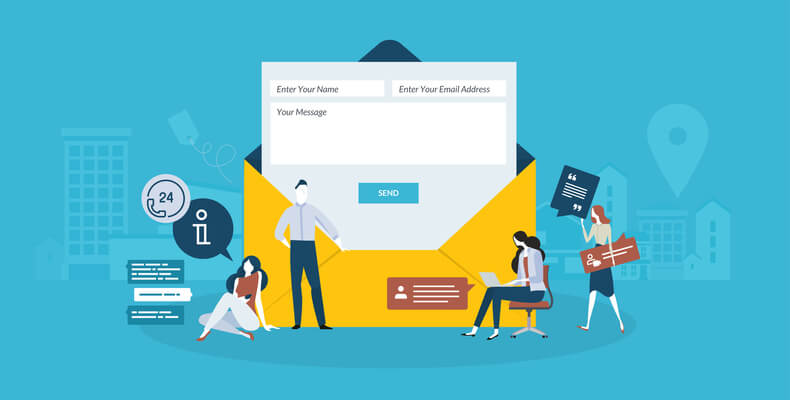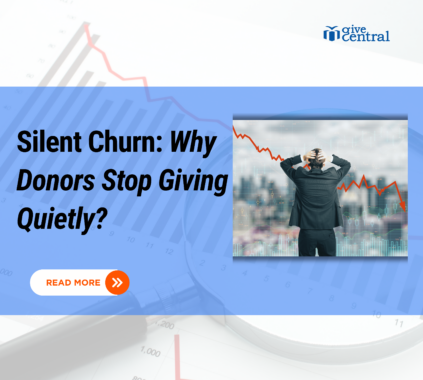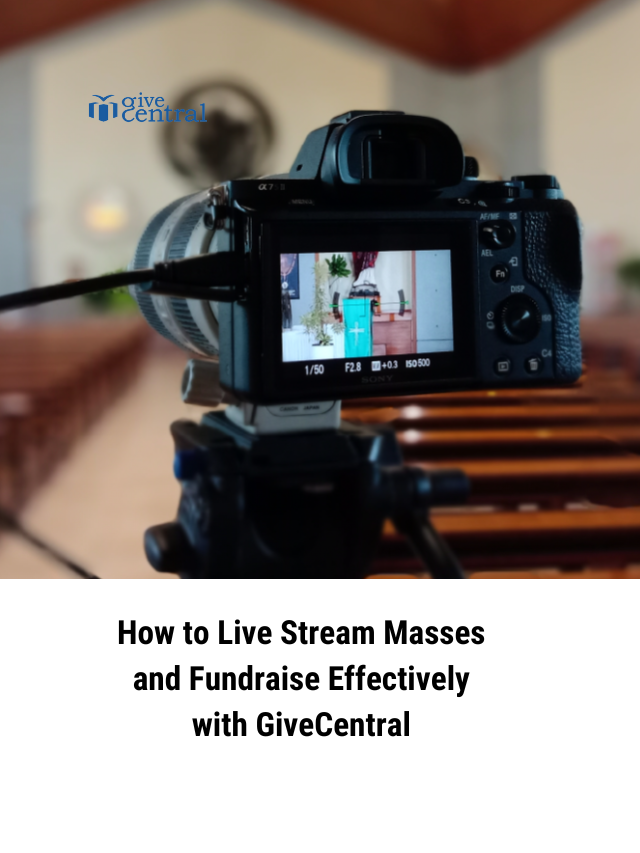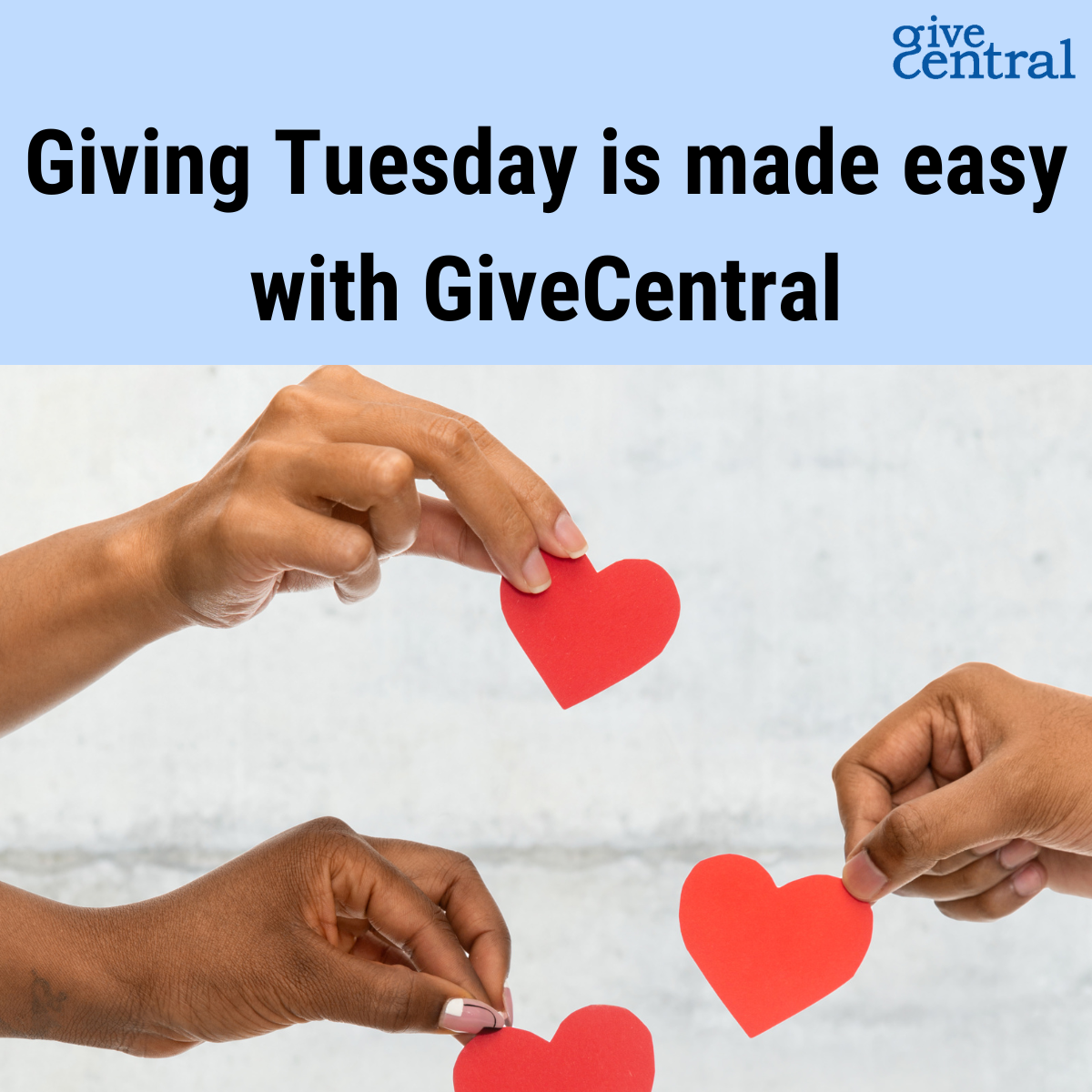Is your organization making the most of its email list? When done right, effective email marketing has the power to substantially boost your nonprofit’s fundraising. Time after time, we see email as one of the highest-converting channels in nonprofits’ Google Analytics reports. Yet, some organizations still shy away from using it as a tool for fundraising.
You may be worried about bothering your supporters by sending too many emails, but in our experience, that is rarely the case. Assuming they gave you their email freely, your supporters want to hear from you! In fact, 26% of online donors say that they most often give as a result of email.
Consequently, email is the perfect tool to drive supporters to your organization’s site to give. This quick guide will walk through three key benefits of email marketing for nonprofit fundraising and offer up actionable tips for improving your fundraising emails.
Benefit #1: Cost-Effective and Efficient
Email marketing is a cost-effective and efficient way for nonprofits to communicate with donors during a fundraising campaign. Most email services these days charge by the contact and features, not by the number of emails you send.
So aside from the time it takes you to create it, sending that extra fundraising email doesn’t cost your organization anything! Email communications also typically take less time to create when compared to their print counterparts. Plus, your email list is likely a lot larger than your list of physical addresses, enabling you to reach a wider audience with your fundraising appeals.
With the time and budget that you save by sending email communications, you can reach supporters multiple times throughout the campaign to share valuable information and encourage donations.
Benefit #2: Measurable Results
While you’ll never really know how many supporters opened the print fundraising appeals that you mail out, email marketing campaigns can be tracked and measured. This can help you continuously improve your email marketing tactics over time, allowing you to send communications that are better tailored to your audience and thus achieve better results.
To start, you might track these email-related metrics, working to improve them for each email that you send:
- Open Rate: The percentage of people who opened the email
- Click-Through Rate: The percentage of people who clicked at least one link within the email
- Conversion Rate: The percentage of people who clicked through to your website and completed a tracked conversion there
- Email Bounce Rate: The percentage of emails that were unable to be delivered
- Unsubscribe Rate: The percentage of people who unsubscribe from your email list after receiving the email
- Revenue Generated From the Email Campaign: The dollar amount from donations through the specific email campaign
Work on increasing the open rate, click-through rate, conversion rate, and revenue by paying attention to emails that show higher or lower numbers than what’s typical for your organization. What did you do differently for that email? And what can you do to avoid or replicate those results in the future?
When it comes to the bounce and unsubscribe rates, the goal is to keep these numbers as low as possible. If you see them start to spike, that could be an indication that something in your strategy needs to pivot—be that the frequency of emails, email content, or even how you’re collecting email addresses.
Benefit #3: Increased Donations
With email marketing, you’re able to reach out to supporters multiple times and in different ways to encourage them to give and increase overall donations.
For example, you might send an email to all of your supporters letting them know about the fundraising campaign and your goals for it. You could send another email to past donors sharing a story that highlights the impact of their previous donations and encourages them to give again.
A third email could share an update on the campaign and urge all donors to help you reach your goal before it ends by bidding in your silent auction. You get the picture—each additional communication offers a new opportunity for email subscribers to donate.
The possibilities are endless! But there are a few tried and true ways to encourage donations within your emails:
- Instill a sense of urgency. Give your supporters a reason to give right now. Don’t let them put it off for later. Your reason could be the fundraising campaign drawing to a close or a time-sensitive program or service you’re collecting funds for.
- Show impact. Let supporters know how their gift will impact your mission and share stories that demonstrate that impact.
- Include a strong call-to-action. Make your ask with a clear and compelling call to donate within the email content, followed by a button or link to your donation page.
- Provide multiple giving options. Educate your donors about their options in your emails and link to your donation page or other donation tools directly within the email.
- Follow up quickly and express gratitude. Send a thank-you email immediately after someone gives to start your relationship on a positive note and set the tone for future involvement and donations.
Don’t listen to the fundraising delusions! There are many different ways to encourage donations through emails. As you experiment with different types of content and asks in fundraising emails, be sure to take note of what works and what falls flat for the next campaign.
7 Email Marketing Tips For Your Next Fundraiser
As a bonus, we’ve pulled together a few email marketing tips for your next fundraising campaign.
- Build a strong email list. These are the people who will receive your fundraising emails, so you want a large and active list! Use nonprofit web design best practices to weave email sign-ups throughout your nonprofit’s website to encourage engaged visitors to sign up.
- Write creative and compelling content. Stop replicating emails from previous years, and instead, capture subscribers’ attention in new and interesting ways. Don’t forget the eye-catching visuals and brand elements—you might even consider a fundraising video!
- Personalize your emails. When possible, segment your emails and craft content that is specific to that audience. Plus, many email providers enable you to use merge tags to include personal details, like the subscriber’s first name, within your email content.
- Use clear calls-to-action. Subscribers should never wonder how they can help or what the next step might be. Be sure to tell them outright what you would like them to do next.
- Leverage an email service provider (ESP). Aside from making your list much more manageable, email service providers improve email deliverability and help ensure you’re complying with email privacy laws, among other benefits.
- Test and optimize your emails. Before you send an email to your whole list, test it to make sure everything works and looks like you’d expect, and then fix any issues that you find. While it’s great to look at the email on a variety of different devices and browsers, at the very least, you’ll want to view the email on both desktop and mobile devices.
- Follow up with donors. Have a plan in place to follow up with donors on a regular basis, reaching out to share things like impact stories, statistics, program updates, and more fundraising appeals. Building a relationship with your donors requires regular communication.
Email marketing and fundraising go hand in hand, and there’s so much you can do to boost fundraising results with email. Stop holding your campaign back! Now that you know the benefits and a few tips, you’re well on your way to blowing your next fundraising campaign out of the water with the addition of a few strategic emails.
To take your efforts even further, consider working with a nonprofit website design company that can help you fine-tune your email marketing efforts and other aspects of your digital strategy.
Best of luck with your next campaign!
email marketing email strategies fundraising campaigns fundraising emails nonprofit communications nonprofit fundraising
Last modified: April 10, 2025





















Профессиональные seo https://seo-optimizaciya-kazan.ru услуги для максимизации онлайн-видимости вашего бизнеса. Наши эксперты проведут глубокий анализ сайта, оптимизируют контент и структуру, улучшат технические аспекты и разработают индивидуальные стратегии продвижения.
Latest news and details about the NBA in Azerbaijan https://nba.com.az. Hot events, player transfers and the most interesting events. Explore the world of the NBA with us.
The latest top football news https://futbol.com.az today. Interviews with football players, online broadcasts and match results, analytics and football forecasts, photos and videos.
Каталог рейтингов хостингов https://pro-hosting.tech на любой вкус и под любые, даже самые сложные, задачи.
Play PUBG Mobile https://pubg-mobile.com.az an exciting world of high-quality mobile battle royale. Unique maps, strategies and intense combat await you in this exciting mobile version of the popular game.
The Dota 2 website https://dota2.com.az Azerbaijan provides the most detailed information about the latest game updates, tournaments and upcoming events. We have all the winning tactics, secrets and important guides.
Latest news about games for Android https://android-games.com.az, reviews and daily updates. Read now and get the latest information on the most exciting games
Check out the latest news, guides and in-depth reviews of the available options for playing Minecraft Az https://minecraft.com.az. Find the latest information about Minecraft Download, Pocket Edition and Bedrock Edition.
Хотите сделать в квартире ремонт? Тогда советуем вам посетить сайт https://stroyka-gid.ru, где вы найдете всю необходимую информацию по строительству и ремонту.
https://LoveFlover.ru — сайт посвященный комнатным растениям. Предлагает подробные статьи о выборе, выращивании и уходе за различными видами комнатных растений. Здесь можно найти полезные советы по созданию зелёного уголка в доме, руководства по декору и решению распространённых проблем, а также информацию о подходящих горшках и удобрениях. Платформа помогает создавать уютную атмосферу и гармонию в интерьере с помощью растений.
1xbet https://1xbet.best-casino-ar.com with withdrawal without commission. Register online in a few clicks. A large selection of slot machines in mobile applications and convenient transfers in just a few minutes.
Pin Up official https://pin-up.adb-auto.ru website. Login to your personal account and register through the Pin Up mirror. Slot machines for real money at Pinup online casino.
Pin-up Casino https://pin-up.admsov.ru/ is an online casino licensed and regulated by the government of Curacao . Founded in 2016, it is home to some of the industry’s leading providers, including NetEnt, Microgaming, Play’n GO and others. This means that you will be spoiled for choice when it comes to choosing a game.
Реальные анкеты проституток https://prostitutki-213.ru Москвы с проверенными фото – от элитных путан до дешевых шлюх. Каталог всех индивидуалок на каждой станции метро с реальными фотографиями без ретуши и с отзывами реальных клиентов.
Buy TikTok followers https://tiktok-followers-buy.com to get popular and viral with your content. All packages are real and cheap — instant delivery within minutes. HQ followers for your TikTok. 100% real users. The lowest price for TikTok followers on the market
Pin Up Casino https://pin-up.sibelshield.ru official online casino website for players from the CIS countries. Login and registration to the Pin Up casino website is open to new users with bonuses and promotional free spins.
Изготовление памятников и надгробий https://uralmegalit.ru по низким ценам. Собственное производство. Высокое качество, широкий ассортимент, скидки, установка.
Pin Up Casino https://pin-up.ergojournal.ru приглашает игроков зарегистрироваться на официальном сайте и начать играть на деньги в лучшие игровые автоматы, а на зеркалах онлайн казино Пин Ап можно найти аналогичную витрину слотов
Pin-up casino https://pin-up.jes-design.ru популярное онлайн-казино и ставки на спорт. Официальный сайт казино для доступа к играм и другим функциям казино для игры на деньги.
Открой мир карточных игр в Pin-Up https://pin-up.porsamedlab.ru казино Блэкджек, Баккара, Хило и другие карточные развлечения. Регистрируйтесь и играйте онлайн!
Официальный сайт Pin Up казино https://pin-up.nasledie-smolensk.ru предлагает широкий выбор игр и щедрые бонусы для игроков. Уникальные бонусные предложения, онлайн регистрация.
Latest World of Warcraft (WOW) tournament news https://wow.com.az, strategies and game analysis. The most detailed gaming portal in Azerbaijani language
Read the latest Counter-Strike 2 news https://counter-strike.net.az, watch the most successful tournaments and become the best in the world of the game on the CS2 Azerbaijan website.
Contact Us Today +995 522 220 894
Explore the extraordinary journey of Kilian Mbappe https://kilian-mbappe.com.az, from his humble beginnings to global stardom. Delve into his early years, meteoric rise through the ranks, and impact on and off the football field.
Paul Labille Pogba https://pogba.com.az French footballer, central midfielder of the Italian club Juventus. Currently suspended for doping and unable to play. World champion 2018.
Kevin De Bruyne https://kevin-de-bruyne.liverpool-fr.com Belgian footballer, born 28 June 1991 years in Ghent. He has had a brilliant club career and also plays for the Belgium national team. De Bruyne is known for his spectacular goals and brilliant assists.
Mohamed Salah Hamed Mehrez Ghali https://mohamed-salah.liverpool-fr.com Footballeur egyptien, attaquant du club anglais de Liverpool et l’equipe nationale egyptienne. Considere comme l’un des meilleurs joueurs du monde.
The young talent who conquered Paris Saint-Germain: how Xavi Simons became https://xavi-simons.psg-fr.com leader of a superclub in record time.
Изготовление, сборка и ремонт мебели https://shkafy-na-zakaz.blogspot.com для Вас, от эконом до премиум класса.
Kevin De Bruyne https://liverpool.kevin-de-bruyne-fr.com Belgian footballer, born 28 June 1991 years in Ghent. He has had a brilliant club career and also plays for the Belgium national team. De Bruyne is known for his spectacular goals and brilliant assists.
Paul Pogba https://psg.paul-pogba-fr.com is a world-famous football player who plays as a central midfielder. The player’s career had its share of ups and downs, but he was always distinguished by his perseverance and desire to win.
Thibaut Nicolas Marc Courtois https://thibaut-courtois.real-madrid-ar.com Footballeur belge, gardien de but du Club espagnol “Real Madrid”. Lors de la saison 2010/11, il a ete reconnu comme le meilleur gardien de la Pro League belge, ainsi que comme joueur de l’annee pour Genk. Trois fois vainqueur du Trophee Ricardo Zamora, decerne chaque annee au meilleur gardien espagnol
Saud Abdullah Abdulhamid https://saud-abdulhamid.real-madrid-ar.com Saudi footballer, defender of the Al -Hilal” and the Saudi Arabian national team. Asian champion in the age category up to 19 years. Abdulhamid is a graduate of the Al-Ittihad club. On December 14, 2018, he made his debut in the Saudi Pro League in a match against Al Bateen
Vinicius Junior https://vinisius-junior.com.az player news, fresh current and latest events for today about the player of the 2024 season
Latest news and information about Marcelo https://marcelo.com.az on this site! Find Marcelo’s biography, career, playing stats and more. Find out the latest information about football master Marcelo with us!
Khabib Abdulmanapovich Nurmagomedov https://khabib-nurmagomedov.com.az Russian mixed martial arts fighter who performed under the auspices of the UFC. Former UFC lightweight champion.
Видеопродакшн студия https://humanvideo.ru полного цикла. Современное оборудование продакшн-компании позволяет снимать видеоролики, фильмы и клипы высокого качества. Создание эффективных видеороликов для рекламы, мероприятий, видеоролики для бизнеса.
Заказать вывоз мусора https://musorovozzz.ru в Москве и Московской области, недорого и в любое время суток в мешках или контейнерами 8 м?, 20 м?, 27 м?, 38 м?, собственный автопарк. Заключаем договора на вывоз мусора.
Реальные анкеты проститутки телефоны Москвы с проверенными фото – от элитных путан до дешевых шлюх. Каталог всех индивидуалок на каждой станции метро с реальными фотографиями без ретуши и с отзывами реальных клиентов.
Diego Armando Maradona https://diego-maradona.com.az Argentine footballer who played as an attacking midfielder and striker. He played for the clubs Argentinos Juniors, Boca Juniors, Barcelona, ??Napoli, and Sevilla.
Gucci купить http://thebestluxurystores.ru по низкой цене в интернет-магазине брендовой одежды. Одежда и обувь бренда Gucci c доставкой.
Muhammad Ali https://muhammad-ali.com.az American professional boxer who competed in the heavy weight category; one of the most famous boxers in the history of world boxing.
Usain St. Leo Bolt https://usain-bolt.com.az Jamaican track and field athlete, specialized in short-distance running, eight-time Olympic champion and 11-time world champion (a record in the history of this competition among men).
Al-Nasr https://al-nasr.com.az your source of news and information about Al-Nasr Football Club . Find out the latest results, transfer news, player and manager interviews, fixtures and much more.
Game World https://kz-games.kz offers the latest online gaming news, game reviews, gameplay and ideas, gaming tactics and tips . Start playing our most popular and amazing games and get ready to become the leader in the online gaming world!
Top sports news https://sport-kz-news.kz, photos and blogs from experts and famous athletes, as well as statistics and information about matches of leading championships.
The latest top football news https://football-kz.kz today. Interviews with football players, online broadcasts and match results, analytics and football forecasts, photos and videos.
Latest news about games for Android https://android-games.kz, reviews and daily updates. Read now and get the latest information about the most exciting games
Зеркала интерьерные https://zerkala-mag.ru в интернет-магазине «Зеркала с подсветкой» Самые низкие цены на зеркала!
Купить зеркала https://zerkala-m.ru по низким ценам. Более 1980 моделей, купить недорого в интернет-магазине в Москве с доставкой по России. Удобный каталог, низкие цены, качественные фото.
Latest Counter-Strike 2 news https://counter-strike-kz.kz, watch the most successful tournaments and be the best in the gaming world.
The latest top football news https://football.sport-news-eg.com today. Interviews with football players, online broadcasts and match results, analytics and football forecasts, photos and videos.
Discover the dynamic world of Arab sports https://sports-ar.com through the lens of Arab sports news. Your premier source for breaking news, exclusive interviews, in-depth analysis and live coverage of everything happening in sports.
Интернет магазин электроники и цифровой техники по доступным ценам. Доставка мобильной электроники по Москве и Московской области.
NHL news https://nhl-ar.com (National Hockey League) – the latest and most up-to-date NHL news for today.
The most important sports news https://bein-sport-egypt.com, photos and blogs from experts and famous athletes, as well as statistics and information about matches of leading leagues.
Discover the wonderful world of online games https://game-news-ar.com. Get the latest news, reviews and tips for your favorite games.
Minecraft news https://minecraft-ar.com, guides and in-depth reviews of the gaming features available in Minecraft Ar. Get the latest information on downloading Minecraft, Pocket Edition and Bedrock Edition.
The site is dedicated to football https://fooball-egypt.com, football history and news. Latest news and fresh reviews of the world of football
Изготовим для Вас изделия из металла https://smith-moskva.blogspot.com, по вашим чертежам или по нашим эскизам.
Antoine Griezmann https://atlticomadrid-dhb.antoine-griezmann-cz.com Atletico Madrid star whose talent and decisive goals helped the club reach the top of La Liga and the UEFA Champions League.
A study of the influence of Rodrigo https://realmadrid.rodrygo-cz.com on the success and marketing strategy of Real Madrid: analysis of technical skills, popularity in Media and commercial success.
How Karim Benzema https://alIttihad.karim-benzema-cz.com changed the game of Al-Ittihad and Saudi football: new tactics, championship success, increased viewership and commercial success.
Study of the playing style of Toni Kroos https://real-madrid.toni-kroos-cz.com at Real Madrid: his accurate passing, tactical flexibility and influence on the team’s success.
The young Uruguayan Darwin Nunez https://liverpool.darwin-nunez-cz.com broke into the elite of world football, and he became a key Liverpool player.
A fascinating story about how David Alaba https://realmadrid.david-alaba-cz.com after starting his career at the Austrian academy Vienna became a key player and leader of the legendary Real Madrid.
The fascinating story of Antonio Rudiger’s transfer https://real-madrid.antonio-rudiger-cz.com to Real Madrid and his rapid rise as a key player at one of the best clubs in the world.
The fascinating story of Marcus Rashford’s ascent https://manchester-united.marcus-rashford-cz.com to glory in the Red Devils: from a young talent to one of the key players of the team.
Try to make a fascinating actor Johnny Depp https://secret-window.johnny-depp.cz, who will become the slave of his strong hero Moudriho Creeps in the thriller “Secret Window”.
Jackie Chan https://peakhour.jackie-chan.cz from a poor boy from Hong Kong to a world famous Hollywood stuntman. The incredible success story of Jackie Chan.
The inspiring story of Zendaya’s rise https://spider-man.zendaya-maree.cz, from her early roles to her blockbuster debut in Marvel Cinematic Universe.
The inspiring story of the ascent of the young actress Anya Taylor https://queensmove.anya-taylor-joy.cz to fame after her breakthrough performance in the TV series “The Queen’s Move”. Conquering new peaks.
Carlos Vemola https://oktagon-mma.karlos-vemola.cz Czech professional mixed martial artist, former bodybuilder, wrestler and member Sokol.
An article about the triumphant 2023 Ferrari https://ferrari.charles-leclerc.cz and their star driver Charles Leclerc, who became the Formula world champion 1.
Young Briton Lando Norris https://mclaren.lando-norris.cz is at the heart of McLaren’s Formula 1 renaissance, regularly achieving podium finishes and winning.
Latest news and analysis of the English Premier League https://epl-ar.com. Detailed descriptions of matches, team statistics and the most interesting football events.
Latest World of Warcraft tournament news https://ar-wow.com (WOW), strategies and game analysis. The most detailed gaming portal in Arabic.
NFL https://nfl-ar.com News, analysis and topics about the latest practices, victories and records. A portal that explores the most beautiful games in the NFL world in general.
Latest Counter-Strike 2 news https://counter-strike-ar.com, watch the most successful tournaments and be the best in the gaming world on CS2 ar.
Latest news from the world of boxing https://boks-uz.com, achievements of Resul Abbasov, Tyson Fury’s fights and much more. Everything Boxing Ambassador has.
Welcome to our official website! Go deeper into Paulo Dybala’s https://paulo-dybala.com football career. Discover Dybala’s unforgettable moments, amazing talents and fascinating journey in the world of football on this site.
Coffeeroom https://coffeeroom.by – магазин кофе, чая, кофетехники, посуды, химии и аксессуаров в Минске для дома и офиса.
Прокат и аренда автомобилей https://autorent.by в Минске 2019-2022. Сутки от 35 руб.
Discover how Riyad Mahrez https://al-ahli.riyad-mahrez.com transformed Al-Ahli, becoming a key player and catalyst in reaching new heights in world football.
Find the latest information on Conor McGregor https://conor-mcgregor.uz news, fights, and interviews. Check out detailed articles and news about McGregor’s UFC career, wins, training, and personal life.
Site with the latest news, statistics, photos of Pele https://edson-arantes-do-nascimento.com and much more. Get the latest news and information about football legend Pele.
The best site dedicated to the football player Paul Pogba https://pogba.org. Latest news from the world of football.
Discover the journey of Charles Leclerc https://ferrari.charles-leclerc-fr.com, from young Monegasque driver to Ferrari Formula 1 leader, from his early years to his main achievements within the team.
Discover Pierre Gasly’s https://alpine.pierre-gasly.com journey through the world of Formula 1, from his beginnings with Toro Rosso to his extraordinary achievements with Alpine.
Novak Djokovic’s https://tennis.novak-djokovic-fr.biz journey from childhood to the top of world tennis: early years, first victories, dominance and influence on the sport.
Discover Casper Ruud’s https://tennis.casper-ruud-fr.com journey from his Challenger debut to the top 10 of the world tennis rankings. A unique success.
Max Verstappen and Red Bull Racing’s https://red-bull-racing.max-verstappen-fr.com path to success in Formula 1. A story of talent, determination and team support leading to a championship title.
The astonishing story of Emmanuel Macron’s https://president-of-france.emmanuel-macron-fr.com political rise from bank director to the highest office in France.
Une ascension fulgurante au pouvoir Donald Trump https://usa.donald-trump-fr.com et son empire commercial
[u][b] Здравствуйте![/b][/u]
Где купить диплом по актуальной специальности?
Приобрести диплом университета.
http://priroda.inc.ru/infa/inf6.html
[u][b] Будем рады вам помочь![u][b]
купить диплом о среднем образовании во владивостоке [url=https://ast-diplomas.com/]ast-diplomas.com[/url] .
[u][b] Здравствуйте![/b][/u]
Купить диплом университета.
Наш сервис предлагает заказать диплом в отличном качестве, который не отличить от оригинала без участия специалистов высокой квалификации со специальным оборудованием.
[b]Где приобрести диплом специалиста?[/b]
http://avva.getbb.ru/ucp.php?mode=login
[b]Успехов в учебе![/b]
[u][b] Здравствуйте![/b][/u]
Мы изготавливаем дипломы психологов, юристов, экономистов и других профессий по приятным тарифам.
Мы готовы предложить документы ВУЗов, расположенных в любом регионе России. Вы имеете возможность купить диплом за любой год, указав актуальную специальность и хорошие оценки за все дисциплины. Документы делаются на “правильной” бумаге самого высшего качества. Это позволяет делать государственные дипломы, которые невозможно отличить от оригиналов. Документы будут заверены всеми требуемыми печатями и штампами.
Даем гарантию, что в случае проверки документов работодателями, никаких подозрений не возникнет.
[b]Где купить диплом по необходимой специальности?[/b]
[url=http://afterwar.rusff.me/viewtopic.php?id=319#p6345]wiki.wonikrobotics.com/AllegroHandWiki/index.php/Special:AWCforum/st/id15107[/url]
How Taylor Swift https://midnights.taylor-swift-fr.com reinvented her sound and image on the intimate and reflective album “Midnights,” revealing new dimensions of her talent.
Explore the rich history and unrivaled atmosphere of the iconic Old Trafford Stadium https://old-trafford.manchester-united-fr.com, home of one of the world’s most decorated football clubs, Manchester United.
Единственная в России студия кастомных париков https://wigdealers.ru, где мастера индивидуально подбирают структуру волос и основу по форме головы, после чего стригут, окрашивают, делают укладку и доводят до идеала ваш будущий аксессуар.
[u][b] Добрый день![/b][/u]
Приобрести диплом любого ВУЗа
[b]Мы предлагаем[/b] выгодно и быстро купить диплом, который выполнен на бланке ГОЗНАКа и заверен печатями, штампами, подписями официальных лиц. Диплом пройдет любые проверки, даже с использованием специального оборудования. Решите свои задачи быстро с нашей компанией.
[b]Где заказать диплом специалиста?[/b]
http://tatuheart.ukrbb.net/posting.php?mode=post&f=41&sid=7b3ba5ef4a427c7dadb8d2bc2904d87c
[u][b] Рады оказать помощь![u][b].
купил диплом истории [url=https://asxdiplomik.com/]asxdiplomik.com[/url] .
купить диплом в рязани [url=https://diplomyx.com/]diplomyx.com[/url] .
Drift Boss has brought me great experiences with breathtaking drifts.
Explore the career and significance of Monica Bellucci https://malena.monica-bellucci-fr.com in Malena (2000), which explores complex themes of beauty and human strength in wartime.
Rivaldo, or Rivaldo https://barcelona.rivaldo-br.com, is one of the greatest football players to ever play for Barcelona.
[b]Привет всем[/b])
Студенческая жизнь прекрасна, пока не приходит время писать диплом, как это случилось со мной. Не стоит отчаиваться, ведь существуют компании, которые помогают с написанием и защитой диплома на высокие оценки!
Сначала я искал информацию по теме: купить диплом в архангельске, купить диплом врача, купить диплом врача, купить диплом в элисте, купить диплом в лениногорске, а потом наткнулся на http://ashinova.ru/category-5/t-1525.html#1525, где все мои учебные проблемы были решены!
Успешной учебы!
The fascinating story of Marcus Rashford’s rise https://manchester-united.marcusrashford-br.com from academy youth to the main striker and captain of Manchester United. Read about his meteoric rise and colorful career.
Хотите научиться готовить самые изысканные и сложные торты? В этом https://v1.skladchik.org/tags/tort/ разделе вы найдете множество подробных пошаговых рецептов самых трендовых и известных тортов с возможностью получить их за сущие копейки благодаря складчине. Готовьте с удовольствием и открывайте для себя новые рецепты вместе с Skladchik.org
купить диплом колледжа в санкт петербурге [url=https://ast-diplomas.com/]ast-diplomas.com[/url] .
Пансионаты для пожилых людей https://moyomesto.ru в Самаре по доступным ценам. Специальные условия по уходу, индивидуальные программы.
Ousmane Dembele’s https://paris-saint-germain.ousmanedembele-br.com rise from promising talent to key player for French football giants Paris Saint-Germain. An exciting success story.
The compelling story of Alisson Becker’s https://bayer-04.florianwirtz-br.com meteoric rise from young talent to key figure in Liverpool’s triumphant era under Jurgen Klopp.
O meio-campista Rafael Veiga leva https://palmeiras.raphaelveiga-br.com o Palmeiras ao sucesso – o campeonato brasileiro e a vitoria na Copa Libertadores aos 24 anos.